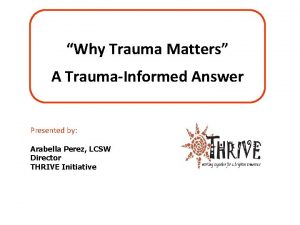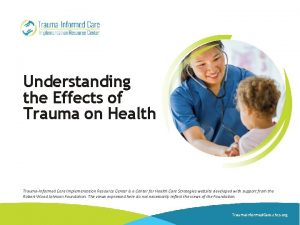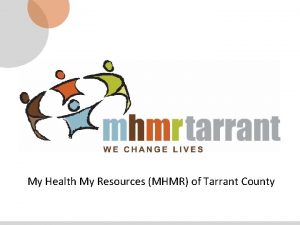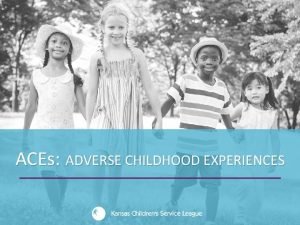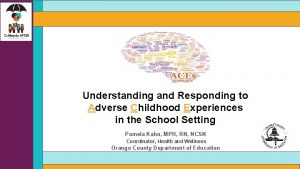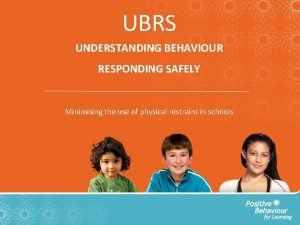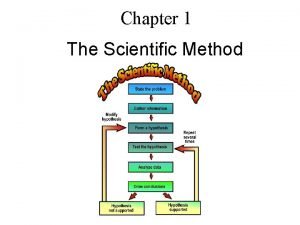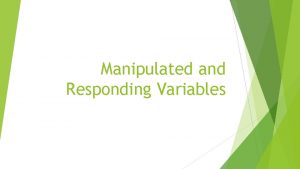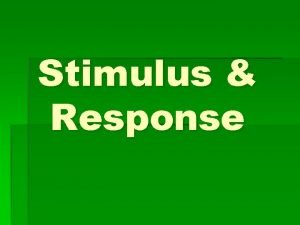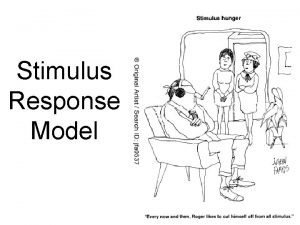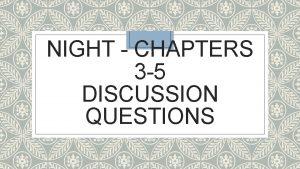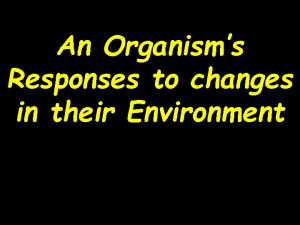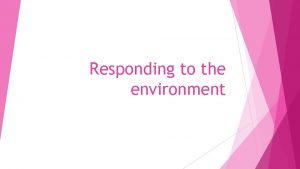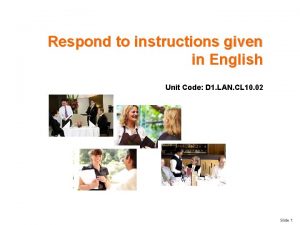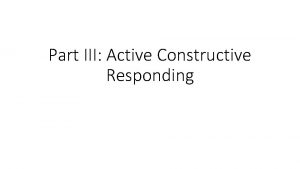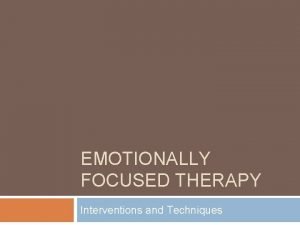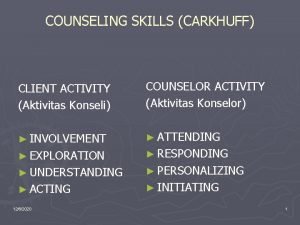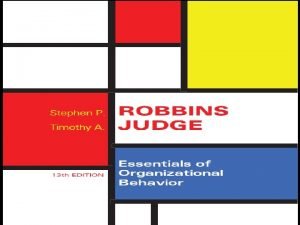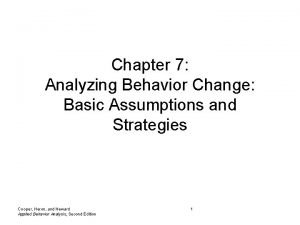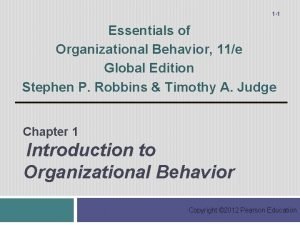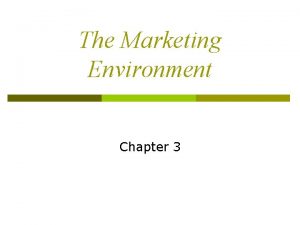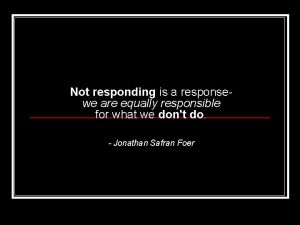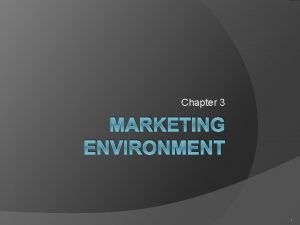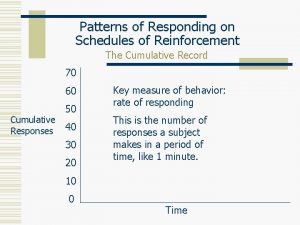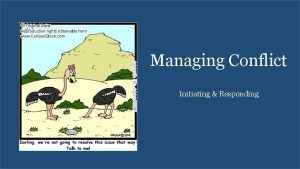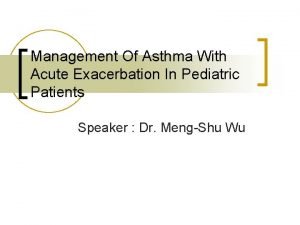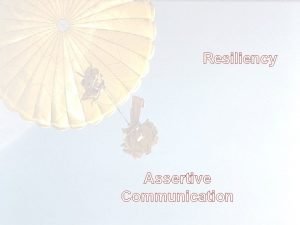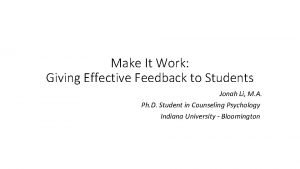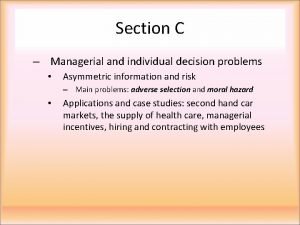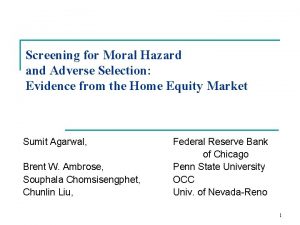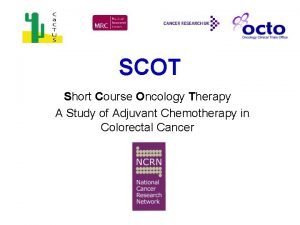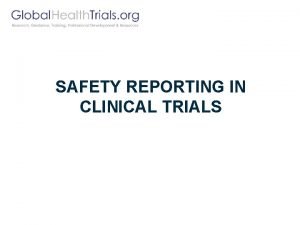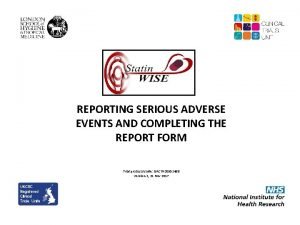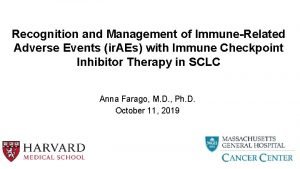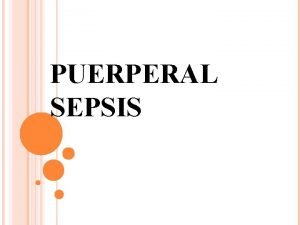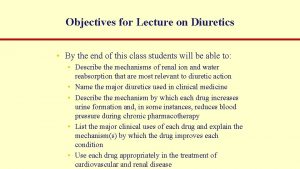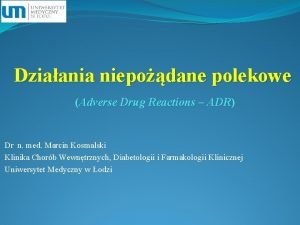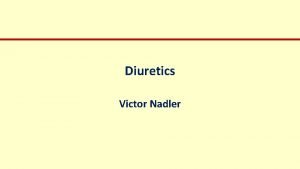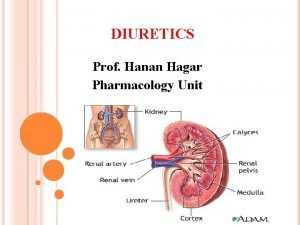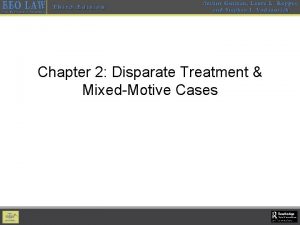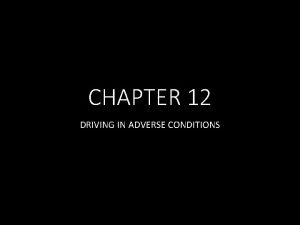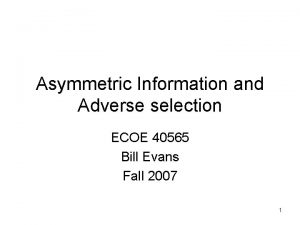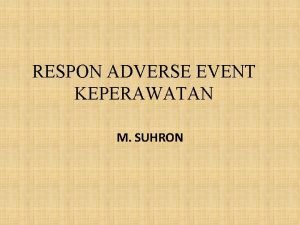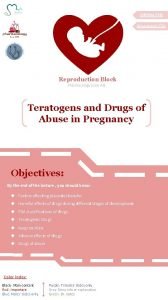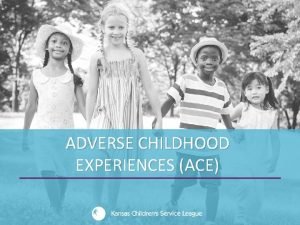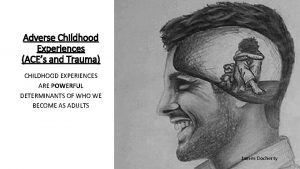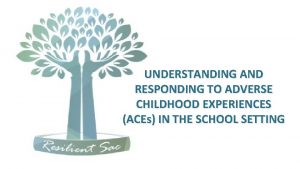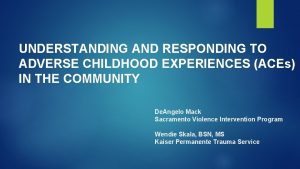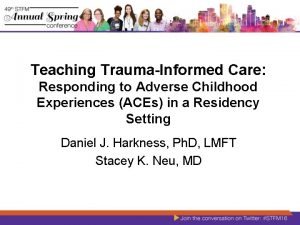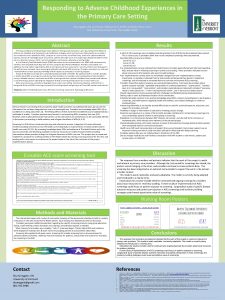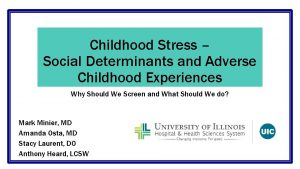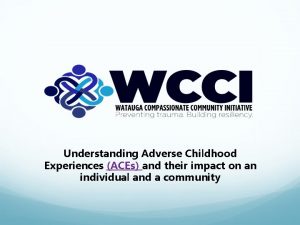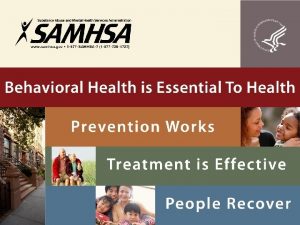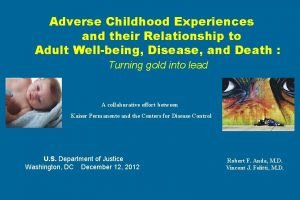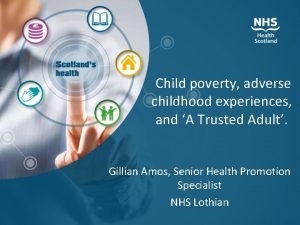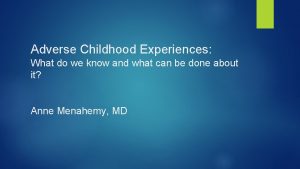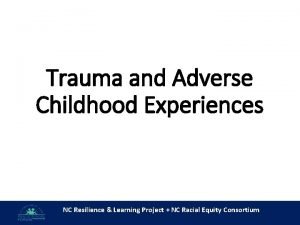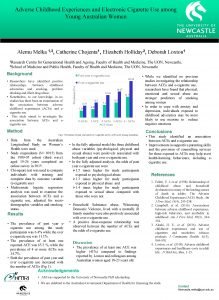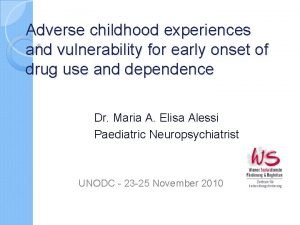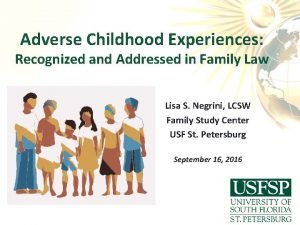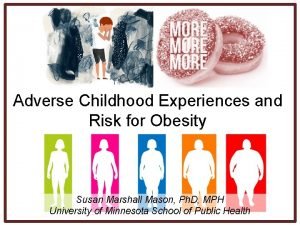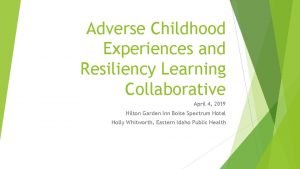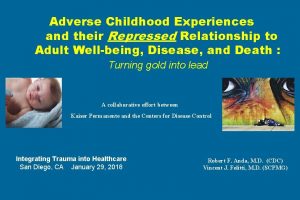Understanding and Responding to Adverse Childhood Experiences in

































































- Slides: 65

Understanding and Responding to Adverse Childhood Experiences in the School Setting Pamela Kahn, MPH, RN, NCSN Coordinator, Health and Wellness Orange County Department of Education

Focus ● The types of stress/trauma and what makes an experience traumatic. ● How trauma experienced during childhood affects brain development ● What is the Adverse Childhood Experiences (ACE) Study ● The relationship between ACEs and subsequent youth health and behaviors ● The role of the school in working with trauma exposed students ● Self care for school staff


Trauma vs. Stress ● ● Trauma ○ A sudden event that dramatically explodes into our lives and changes the way we perceive the world ○ Often life-threatening Stress ○ A reaction to less dramatic and often daily events that are perceived as threatening such as a job interview, deadlines, finances, or worries related to an ongoing security situation. ○ Typically do not feel a loss of control Herzog Israel Center for the Treatment of Psychotrauma


Eustress (Positive Stress) Stressful, but primarily positive experiences. Short term, motivates and focuses energy. Experience is within our coping abilities, feels exciting and improves performance • Receiving a promotion or raise at work • Starting a new job • Marriage • Buying a home • Having a child • Moving • Taking a vacation • Holiday seasons

Tolerable Stress (Acute Trauma) • Single incident (crime victim, serious accident, natural disaster) • Treatment includes immediate support, removal from the scene of the trauma, use of medication for immediate relief of grief, anxiety, and insomnia, and brief supportive psychotherapy provided in the context of crisis intervention.

Toxic Stress (Complex Trauma/PTSD/Extreme Stress) ● Protracted exposure to prolonged social and/or interpersonal trauma in the context of dependence, captivity or entrapment. (ex. chronic maltreatment, neglect or abuse in a care-giving relationship, hostages, prisoners of war, concentration camp survivors, and survivors of some religious cults). ● Often results in borderline or antisocial personality disorder or dissociative disorders. ● ● Behavioral difficulties (such as impulsivity, aggression, sexual acting out, eating disorders, alcohol or drug abuse, and self-destructive actions) ● Extreme emotional difficulties (intense rage, depression, or panic) and mental difficulties (fragmented thoughts, dissociation, and amnesia). The treatment of such patients often takes much longer, may progress at a much slower rate, and requires a sensitive and highly structured treatment program delivered by a team of trauma specialists

Toxic Stress/Complex trauma • Is chronic ● Often begins in early childhood ● Occurs within the primary caregiving system and/or social environment

What is Trauma? ● The word “trauma” is used to describe experiences or situations that are emotionally painful and distressing, and that overwhelm people’s ability to cope, leaving them powerless. (Center for Nonviolence & Social Justice, 2016) *

What Makes an Experience Traumatic? ● ● ● Overwhelming, very painful, very scary Fight or Flight incapacitated Threat to physical or psychological safety Loss of control Unable to regulate emotions Trauma is the response to the event, not the event itself.

Trauma ● Prevalent in the lives of children ● Causes physical and emotional distress and affects learning and school performance ● Children/teens experience the same emotions as adults, but may not have the words to express them ● Schools have an important role to play in meeting the social/emotional needs of students ● Trauma sensitive schools help children feel safe to learn

Prevalence of Youth Trauma ● 38% of children and adolescents experienced at least one potentially traumatic event. ○ 26% of children in the United States will witness or experience a traumatic event before they turn four. ● In a nationally representative survey of 12 - to 17 -year-old youth, 8 percent reported a lifetime prevalence of sexual assault, 17 percent reported physical assault, and 39 percent reported witnessing violence ● In a community sample of older adolescents, 14. 5 percent of those who had experienced a serious trauma developed PTSD (5% of adolescents have met criteria for PTSD in their lifetime) ● Students living in poverty, homelessness, and with other social vulnerabilities are significantly more apt to experience stress and trauma. National Children’s Survey, 2016

Persistent Stress Changes Brain Architecture (Prefrontal Cortex and Hippocampus) Chronic stress Normal Typical neuron with many connections Neuron damaged by toxic stress – fewer connections Bock et al Cer Cort 15: 802 (2005) Source: C. Nelson (2008)

Poverty’s Toll ● Poverty and the conditions that often accompany it—violence, excessive noise, chaos at home, pollution, malnutrition, abuse and parents without jobs—can affect the interactions, formation and pruning of connections in the young brain.

Poverty Decreases Brain Gray Matter 46. 0% of children in the state were poor or near poor with another 4. 7% living in deep poverty Public Policy Institute of California, 2018 www. sciencedaily. com

Physical Effects of Trauma on the Brain

T www. thedevlopingchild. net

Trauma’s Impact on Brain Development • Attachment: Trouble with relationships, boundaries, empathy & social isolation ● Physical Health: Impaired sensorimotor development, coordination problems, increased medical problems & somatic symptoms ● Emotional Regulation: Difficulty identifying or labeling feelings and communicating needs ● Dissociation: Altered states of consciousness, amnesia, impaired memory ● Cognitive Ability: Problems with focus, learning, processing new information, language development, planning & orientation to time & space ● Self-Concept: Lack of consistent sense of self, body image issues, low self-esteem, shame & guilt ● Behavioral Control: Difficulty controlling impulses, oppositional behavior, aggression, disrupted sleeping & eating patterns, trauma reenactment Source; Cook, A. , Spinazzola, P. , Ford, J. , Lanktree, C. , Blaustein, M. , Cloitre, M. , et al. (2005). Complex trauma in children and adolescents. Psychiatric Annals, 35(5), 390 -398.


Impacts of Trauma on Child Behavior ●Trauma causes brain to adapt in ways that contributed to their survival (i. e. constant fight/flight/freeze). ●↓ ●These adaptations can look like behavior problems in “normal” contexts, such as school. ●↓ ●When triggered, “feeling” brain dominates the “thinking” brain. ●↓ ●The normal developmental process is interrupted, and students may exhibit internalizing or externalizing behaviors.

Fight, Flight & Freeze What do these Look Like in Children? • FIGHT • • FLIGHT • • Hyperactivity, verbal aggression, oppositional behavior, limit testing, physical aggression, “bouncing off the walls” Withdrawal, escaping, running away, self-isolation, avoidance FREEZE • Stilling, watchfulness, looking dazed, daydreaming, forgetfulness, shutting down emotionally

Consequences of Complex Stress/Trauma ● Students overloaded with stress hormones and unable to function appropriately can’t focus on schoolwork. ● They fall behind in school/fail to develop healthy relationships with peers or create problems with school staff because they are unable to trust adults. ● With failure, despair, and frustration pecking away at their psyches, they find solace in food, alcohol, tobacco, methamphetamines, inappropriate sex, high-risk sports, and/or work. ● They don’t regard these coping methods as problems. They see them as a way to obtain relief and to escape from depression, anxiety, anger, fear and shame.

Adverse Childhood Experiences (ACEs) Study • Partnership b/w Kaiser Permanente and CDC • The initial surveys began in 1995 and continued through 1997, with the participants followed subsequently for more than fifteen years. • Retrospective approach examined link between multiple types of childhood stressors and adult health for over 17, 000 adult participants • Questionnaire asked for detailed information on past history of abuse, neglect and family dysfunction as well as current behaviors and health status. .

ACE Study Key Concept ● Stressful or traumatic childhood experiences can result in social, emotional, and cognitive impairments. ● Fear-based childhoods disrupt neurodevelopment, and can actually alter normal brain structure and function.

Three Types of ACEs http: //www. npr. org/assets/img/2015/02/20/aces 1_custom. jpg

ACE Score ● The ACE score is the total number of ACEs that each participant reported. ○ For example, experiencing physical neglect would be an ACE score of one; if the child also witnessed a parent being treated violently, the ACE score would be two. ○ The higher the score, the higher the risk for later health problems. ○ Given an exposure to one category, there is an 80% likelihood of exposure to another.

ACEs Increase Health Risks

The ACE Questionnaire ● ● ● ● Prior to your 18 th birthday: Did a parent or other adult in the household often or very often… Swear at you, insult you, put you down, or humiliate you? or Act in a way that made you afraid that you might be physically hurt? No___If Yes, enter 1 __ Did a parent or other adult in the household often or very often… Push, grab, slap, or throw something at you? or Ever hit you so hard that you had marks or were injured? No___If Yes, enter 1 __ Did an adult or person at least 5 years older than you ever… Touch or fondle you or have you touch their body in a sexual way? or Attempt or actually have oral, anal, or vaginal intercourse with you? No___If Yes, enter 1 __ Did you often or very often feel that … No one in your family loved you or thought you were important or special? or Your family didn’t look out for each other, feel close to each other, or support each other? No___If Yes, enter 1 __ Did you often or very often feel that … You didn’t have enough to eat, had to wear dirty clothes, and had no one to protect you? or Your parents were too drunk or high to take care of you or take you to the doctor if you needed it? No___If Yes, enter 1 __ Was a biological parent ever lost to you through divorce, abandonment, or other reason ? No___If Yes, enter 1 __ Was your mother or stepmother: Often or very often pushed, grabbed, slapped, or had something thrown at her? or Sometimes, often, or very often kicked, bitten, hit with a fist, or hit with something hard? or Ever repeatedly hit over at least a few minutes or threatened with a gun or knife? No___If Yes, enter 1 __ Did you live with anyone who was a problem drinker or alcoholic, or who used street drugs? No___If Yes, enter 1 __ Was a household member depressed or mentally ill, or did a household member attempt suicide? No___If Yes, enter 1 __ Did a household member go to prison? No___If Yes, enter 1 __ Now add up your “Yes” answers: _ This is your ACE Score ● ●

The ACE Study Pyramid

More than half of adolescents have had at least one of these adverse childhood experiences, and nearly one in ten have experienced four or more.


Disparities by Race & Ethnicity ● Black and Hispanic children in almost all regions of the U. S. are more likely to experience ACEs ● Nationally: 0 ACEs ○ 60% Non-Hispanic White ○ 49% Hispanic ○ 39% Non-Hispanic Black ○ > 75% Asian non-Hispanic 2016 National Survey of Children's Health

Disparities by Race & Ethnicity ● Economic hardship and divorce or separation of parent/guardian are most common ACEs reported for all children. ○ White children ■ ○ ○ Living w/adult with mental illness Black (non-Hispanic) Children ■ Parental incarceration ■ Most likely to have experienced death of a parent Hispanic children ■ Living w/adult who has substance use problem and parental incarceration 2016 National Survey of Children's Health

Income Disparities ● ACEs are more prevalent among children in low-income families ○ 62 percent of children with family incomes under 200 percent of the federal poverty level have had at least one ACEs. ○ 26 percent of children in families with incomes higher than 400 percent of the federal poverty level have had one or more ACEs as well. 2016 National Survey of Children’s Health

ACE and Risky Behaviors ● The higher the ACE score, the more we see risky health behaviors in childhood and adolescence including: ○ Pregnancies ○ Suicide attempts ○ Early initiation of smoking ○ Sexual activity ○ Illicit drug use

The ACE Comprehensive Chart

ACE Exposure and Education ● As early as the 1960’s research established direct connections between childhood disadvantage and diminished educational outcomes. ○ Disparities in early-childhood experience produced disparities in cognitive skill – most significant, in literacy- that could be observed on the first day of Kindergarten and well into adulthood. ● Among patients with an ACE score of 0, just 3% display learning/behavior problems. ● Among patients with a score of ≥ 4, the figure is 51%. * *Burke, J. , Hellman, J. , Scott, B. , Weems, C. & Carrion, V. The impact of adverse childhood experiences on an urban pediatric population. Child Abuse & Neglect, 2011: 35(6): 408 -413

ACE’s & Negative Well-Being

Why Should Schools Be Trauma Informed? ● Children are more likely to access mental health services through primary care and schools than through specialty mental health clinics ● Over 70% of students who do receive mental health services, receive those services in schools ● Children with mental health disorders struggle in school and are less likely to succeed academically (Costello et. al. , 1998; Duchnowski, Kutash & Friedman, 2002; Mental health America of Greater Houston, 2011; SRI International, 2015)

Trauma and our Students ● Danger and safety are the core concerns of traumatized children even in mostly safe places like school. ● Traumatic events outside school can generate distressing reminders in the hallway, in the classroom or anywhere on school grounds that interfere with a student’s ability to regulate their emotions and to learn. ● Protective factors, such as positive relationships with teachers and peers in schools can reduce the adverse impact of trauma ● Trauma plays an major role among at risk and special populations: Children in the Child Welfare and Juvenile Justice Systems, Children in Special Education, LGBTQ Children, Children in Areas of Poverty, Gang Violence and Crime, Children with MH Challenges, etc. Wong, 2013

How Trauma Affects Learning ● Traumatic stress from adverse childhood experiences can undermine the ability to form relationships, regulate emotions, and impair cognitive functions. ● Hyper arousal, intrusion or constriction may interfere with processing of verbal/nonverbal and written information ● Ability to organize material sequentially may be inhibited due to coming from a chaotic environment. ● Difficulty with classroom transitions ● Problems with solving from a different point of view, inferring ideas, or working in group/exhibiting empathy may result when students do not feel safe expressing a preference.

Common Triggers for Traumatized Children ● ● ● ● Unpredictability or sudden change Transition from one setting/activity to another Loss of control Feelings of vulnerability or rejection Confrontation, authority, or limit setting Loneliness Sensory overload (too much stimulation from the environment)

What might you notice about students? Difficulty with… • Organization • Cause and effect • Taking another’s perspective • Attentiveness • Regulating emotions • Executive functions • Engaging in the curriculum • Transitions

What might you notice about students? • • • Reactivity and impulsivity Aggression and defiance Withdrawal/avoidan ce Perfectionism Repetitive thoughts or comments about death or dying • • Non-age appropriate behavior Anxiety/worry about safety of self and others Poor or changed school performance and attendance Overly protective of personal space or belongings

Using a “Trauma Lens” A shift in perspective… “What is wrong with this student? ” “What has this student been through? ”

Schools Can Support Traumatized Students • Build relationships with struggling students • Create a safe and predictable environment with clear, consistent rules • Provide opportunities for students to meaningfully participate in class with some control & responsibility • Embed mental health into the curriculum • Check assumptions, observe, and question • Be a model for appropriate behavior and relational skills • Work with students to create a self-care plan to address triggers

How to Respond When a Student Is Triggered… ● Breathe! Be calm and you will help the student be calm. ● Do not use this as a time to try to change behavior or demand respect. ● Call for help, or ask another person to call. ● Notice your tone of voice and personal space. ● Remember that the student is probably not engaged in the pre-frontal cortex right now!

Remember…. ● Trauma generated behaviors are complex but can be understood and addressed by educators ● A positive teacher student relationship may take an investment of more time with a traumatized child ● Student-teacher trust must be established before the process of teaching and learning can truly begin ● Working with trauma-exposed children can evoke distress in providers that makes it more difficult for them to teach and manage the classroom Wong, 2013

School-Based Mental Health Interventions • Individual counseling services • Safety/crisis planning • Behavior plans • Therapeutic & skill-building groups • Youth development activities • Case/Care management

Examples of Services and Programs ● ● Psychological First Aid: Listen Protect Connect Support to Students Exposed to Trauma (SSET) ● PBIS ● Restorative Practices ● Range of Activities – Student Interest Groups ● Community Internships ● Crisis Intervention ● Mental Health Services ● Threat and Risk Assessment teams ○ Intimidation and Bullying ○ Stalking ○ Relationship violence ○ Weapons possession ○ Suicidal behavior ○ Physical Assault

Trauma-Informed Schools Require Broad Partnerships ● A partnered approach engages all stakeholders ● Implement components in a manner that fits within each schools’ unique organizational structure and culture Wong, 2013

How Can School Staff Help? Entire Classroom • Individual & Groups of Students • Build 1: 1 relationships with struggling students • 3: 1 ratio of positive to negative • Allow students to step outside of the classroom or put their head down • Use restorative practices language Create time in schedule fo community building, circles, mindfulness • Seat students near the front or near you • Give opportunities for expression • Mind-Brain body breaks • Teach about the power of mindsets • • Establish classroom agreements for behavior Provide routines and consistency Provide explicit preparation for changes and transitions

Mind-Brain-Body Breaks • • • Deep breathing Progressive relaxation Stretching or Movement Imagery • • • Mindfulness Quiet Ball One-minute Dance Party ● Gonoodle. com www. brainbreaks. blogspot. com http: //www. coloradoedinitiative. org/resources/teacher-toolbox-activity-breaks/


Tips for School Staff • Coordinate efforts with others and make referrals • Let students know you care by listening, empathizing, and providing structure • Support and encourage participation in programs at your school that build relationships and student assets • Offer ways for families to connect to your school • Don’t make promises you can’t keep • When you become aware of a student who has experienced trauma, ask for help

Secondary Traumatic Stress (STS) “It is not uncommon for school professionals who have a classroom with one or more students struggling from the effects of trauma to experience symptoms very much like those their students are exhibiting. ” The Heart of Learning and Teaching: Compassion, Resilience, and Academic Success

Early recognition is important! Compassion Fatigue/Secondary Traumatic Stress ● Any educator who works directly with traumatized children and adolescents is vulnerable to the effects of trauma ● You may be even more susceptible to STS if you have: ○ Personal exposure to a traumatic event or to individuals who are coping with one ○ Direct contact with children's’ traumatic stories ○ Are helping others and neglecting yourself

Know the Signs of STS ● Emotional — feeling numb or detached; feeling overwhelmed or maybe even hopeless. ● Physical — having low energy or feeling fatigued. ● Behavioral — changing your routine or engaging in self-destructive coping mechanisms. ● Professional — experiencing low performance of job tasks and responsibilities; feeling low job morale. ● Cognitive — experiencing confusion, diminished concentration, and difficulty with decision making; experiencing trauma imagery, which is seeing events over and over again. ● Spiritual — questioning the meaning of life or lacking self-satisfaction. ● Interpersonal — physically withdrawing or becoming emotionally unavailable to your coworkers or your family.

Managing STS ● Don’t go it alone ○ Guard against isolation, work in teams, talk with others ● Address your own traumas ● Seek professional help if symptoms last longer than 2 -3 weeks ● STS Happens! ○ It’s an occupational hazard, and not a failing on your part

Practice Self Care ● Your work is not the only activity that defines you! ○ Spend time with those who are not experiencing trauma, both adults and youth ○ Eat well ○ Exercise (yoga & meditation are useful) ○ Do what makes you happy ○ Take a break during the workday, even if it’s only a 5 minute walk (deep breathing is a great break!) ○ Crying is ok…. ■ But find things to laugh about too

Resources • Transforming Trauma-Schools with Informed Care • • Helping Traumatized Children Learn • • https: //www. schoolcounselor. org/asca/media/asca/ASCAU/Trauma-Crisis-Management. Specialist/Transforming. Schools. pdf https: //traumasensitiveschools. org/trauma-and-learning/#principal Treatment and Services Adaption Center • • https: //traumaawareschools. org/secondary. Stress National Child Traumatic Stress Network • http: //www. nctsn. org/products/self-care-educators-dealing-secondary-traumatic-stress

And More…. • Adolescent Health Working Group • www. ahwg. net • Harvard Center on the Developing Brain • http: //developingchild. harvard. edu/ • Reaching Students with Emotional Disturbances • • https: //www. edutopia. org/article/reaching-students-emotional-disturbances-lori-desautels OCDE Student Mental Health Resources • www. ocde. us/Healthy. Minds/Pages/Resources. aspx


Session Survey - Thank you for attending. Please provide feedback for this session by pressing Feedback Survey under the session title you are attending within SCHED. You can access the link through the SCHED app or by going to https: //2018 mtsspli. sched. com/. Thank you.
 Adverse childhood experiences study
Adverse childhood experiences study Adverse childhood experiences study
Adverse childhood experiences study Adverse childhood experiences study
Adverse childhood experiences study Schoolsworkpro
Schoolsworkpro What are adverse childhood experiences
What are adverse childhood experiences Understanding behaviour responding safely
Understanding behaviour responding safely Early childhood and middle childhood
Early childhood and middle childhood Manipulated variable and responding variable graph
Manipulated variable and responding variable graph Why are line graphs powerful tools in science?
Why are line graphs powerful tools in science? Congratulations dialogue
Congratulations dialogue What is the fourth step of the scientific method
What is the fourth step of the scientific method Manipulated variable
Manipulated variable Making and responding to requests 2 bac
Making and responding to requests 2 bac Responding to internal stimuli
Responding to internal stimuli Stimulus response
Stimulus response Night chapter 5 questions
Night chapter 5 questions Psychomotor examples in lesson plan
Psychomotor examples in lesson plan Responding to peer pressure by shouting insults is
Responding to peer pressure by shouting insults is _____ is done with the first responding officer.
_____ is done with the first responding officer. Analyzing the marketing environment summary
Analyzing the marketing environment summary Responding to internal stimuli
Responding to internal stimuli Responding to the environment
Responding to the environment He understands the instructions given by the agent
He understands the instructions given by the agent Joy multiplier
Joy multiplier Eft cycle
Eft cycle Crisis development model integrated experience
Crisis development model integrated experience Attending responding personalizing initiating
Attending responding personalizing initiating Responding to globalization in ob
Responding to globalization in ob Behavioral variability aba
Behavioral variability aba Responding to economic pressures in ob
Responding to economic pressures in ob Natural environment marketing
Natural environment marketing Not responding is a response
Not responding is a response Responding to globalization in ob
Responding to globalization in ob Macro environment in marketing
Macro environment in marketing Scalloped pattern of responding
Scalloped pattern of responding Transversal lines
Transversal lines Responding sides
Responding sides Score pulmonar pediatrica
Score pulmonar pediatrica Affective domain responding
Affective domain responding Active constructive responding
Active constructive responding Losada ratio
Losada ratio Adverse reaction definition
Adverse reaction definition Near miss sentinel event
Near miss sentinel event Adverse selection
Adverse selection Adverse selection
Adverse selection Adverse reaction definition
Adverse reaction definition Adverse reaction definition
Adverse reaction definition Adverse events in hospital
Adverse events in hospital Ir adverse event
Ir adverse event Puerperal endometritis
Puerperal endometritis Adverse selektion
Adverse selektion Effects of paracetamol
Effects of paracetamol Loop diuretics adverse effects
Loop diuretics adverse effects S
S Tradjenta to januvia conversion
Tradjenta to januvia conversion Adverse selection
Adverse selection Adr adverse drug reaction
Adr adverse drug reaction Loop diuretics adverse effects
Loop diuretics adverse effects Diuretic drugs classification
Diuretic drugs classification Paracetamol adverse effects
Paracetamol adverse effects Adverse treatment
Adverse treatment Driving in adverse conditions
Driving in adverse conditions Chapter 12 driving in adverse conditions
Chapter 12 driving in adverse conditions Adverse selection
Adverse selection Adverse event adalah
Adverse event adalah Fetal warfarin syndrome mnemonic
Fetal warfarin syndrome mnemonic
